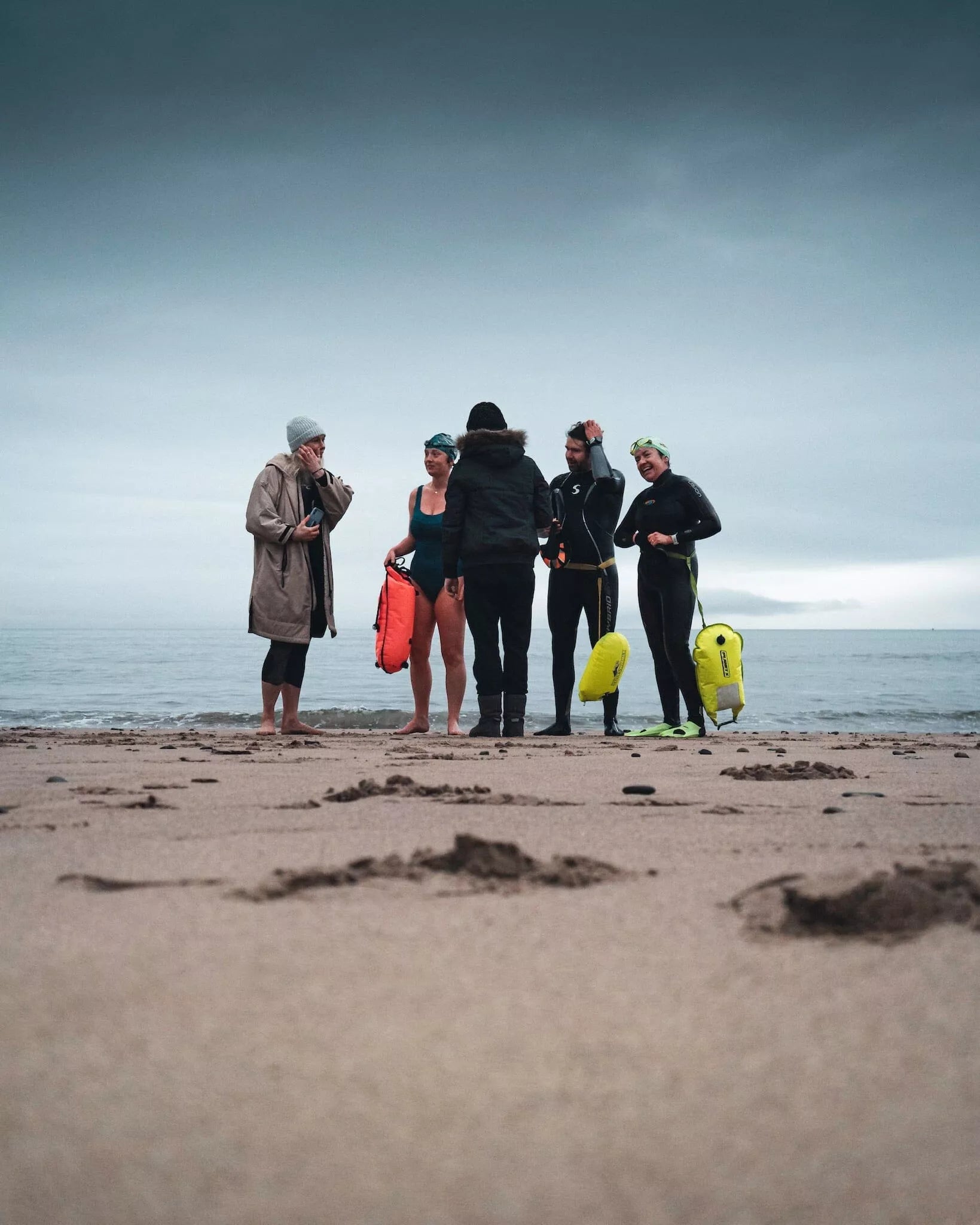Welcome to our Seashell blog posts where we dive into the stories of the Seashell people.
We hope to use this space and platform to inspire others and to start important conversations.
Today we are going to have a look at why sea swimming is such great fun but how we can be safe whilst doing it.
Swimming in the sea can be a thrilling and refreshing experience, with the cool saltwater, waves, and beautiful scenery providing a sense of freedom and relaxation. However, as much as it can be fun, it is important to understand the potential dangers of sea swimming and take necessary precautions to stay safe.
Why is Sea Swimming so enjoyable?
One of the main reasons why sea swimming is so enjoyable is the sense of adventure and exploration it provides. Unlike swimming in a pool or a loch, the ocean offers a vast and unpredictable environment that can be both challenging and exhilarating. You never know what you might encounter, from playful dolphins and fish to powerful waves and rip currents. This sense of unpredictability can make the experience feel like an adventure, and is a major reason why many people enjoy sea swimming.
Another reason why sea swimming can be so fun is the physical benefits it provides. Swimming is a great form of exercise that can help to build strength, improve cardiovascular health, and reduce stress. Swimming in the ocean adds an extra challenge, as you have to contend with the movement of the water and the effects of waves and tides. This makes it an even more effective workout, as you use more muscles and burn more calories to stay afloat and navigate the currents.
Why is Sea Swimming dangerous?
However, despite the many benefits of sea swimming, it is important to be aware of the potential risks and take steps to stay safe. One of the most significant dangers of sea swimming is the risk of drowning. The ocean is a powerful and unpredictable force, and even experienced swimmers can be caught off guard by a sudden change in the weather or the currents. To reduce the risk of drowning, it is important to always swim with a partner or in a group, stay within designated swimming areas, and avoid swimming in rough or choppy conditions.
Another danger of sea swimming is the risk of injury from marine life. Jellyfish, sea urchins, and other creatures can cause painful stings or cuts, while sharks and other predators can pose a serious threat to swimmers. To minimize the risk of injury, it is important to be aware of the local marine life and any potential hazards, and to avoid swimming in areas where these risks are known to be present.
Sea swimming can also pose a risk to your health due to exposure to saltwater and pollutants. Saltwater can cause skin irritation and dehydration, while pollution from oil spills, sewage, and other sources can lead to serious health problems. To protect your health, it is important to rinse off with fresh water after swimming, avoid swallowing seawater, and check for any beach closures or warnings before entering the water.
8 Top Tips for being more safe in the Sea:
1. Check the weather conditions: Before you head out to the beach, make sure to check the weather forecast and ocean conditions. Avoid swimming during storms, high winds, or rough waters, as they can increase the risk of drowning or being swept away by strong currents.
2. Swim with a buddy: It's always a good idea to swim with a partner or in a group, as they can help keep an eye on you and provide assistance if needed. Never swim alone, and if you're with children, keep a close eye on them at all times.
3. Stay in designated swimming areas: Many beaches have designated swimming areas that are marked by buoys or flags. Stay within these areas and avoid venturing too far out into the open ocean, where currents and waves can be unpredictable.
4. Learn about the local marine life: If you're swimming in an area known for its marine life, such as jellyfish, seals of Orcas for example so make sure to research the risks and take necessary precautions. For example, you may need to wear a wetsuit or avoid swimming during certain times of the year.


5. Be aware of rip currents: Rip currents are powerful currents that can pull swimmers away from shore and out to sea. If you get caught in a rip current, don't try to swim against it. Instead, swim parallel to the shore until you are out of the current, and then swim back to shore.
6. Wear appropriate swimwear: Make sure to wear appropriate swimwear that is comfortable and fits well. Wetsuits can help keep you warm and protect your skin from jellyfish stings and other hazards.
7. Don't drink alcohol before swimming: Drinking alcohol before swimming can impair your judgment and reaction time, making it more difficult to stay safe in the water.
8. Listen to lifeguards and warning signs: Not all beaches have lifeguards but if there are then always listen to them of other officials. Pay attention to any warning signs or flags on the beach, as they can provide very important information about the ocean conditions and help keep you safe.
In conclusion.
In conclusion, sea swimming can be a fun and rewarding experience, but it is important to be aware of the potential dangers and take necessary precautions to stay safe. By following these simple guidelines, you can enjoy all the benefits of sea swimming while minimizing the risks and ensuring a safe and enjoyable experience.
Remember, the ocean can be unpredictable and dangerous, so always take precautions and be mindful of your surroundings.
Head out and enjoy the wild! Tag us on social media and come along to our weekly dips.
See you there!
The ultimate guide to unlocking the full potential of one of nature's most powerful resources.
Cold water has been used for centuries as a natural remedy to promote health, vitality, and well-being, and its benefits are backed by science.
Whether you're a seasoned cold water enthusiast or just starting out, this comprehensive guide will provide you with all the information you need to harness the power of cold water and take your health and wellness to the next level.






Let's Talk Resilience. Can Cold Water Therapy Help?
How can we encourage children to get outside?